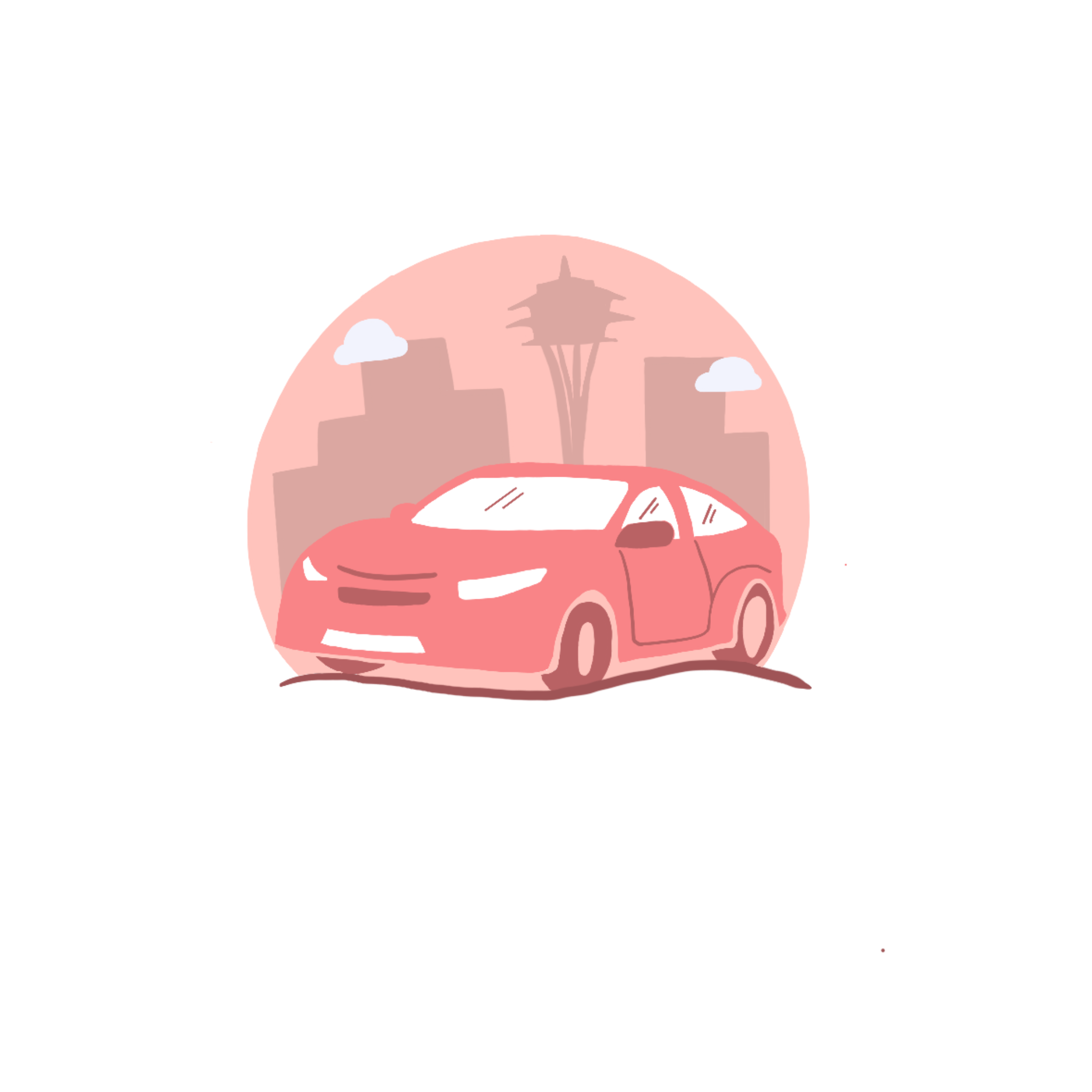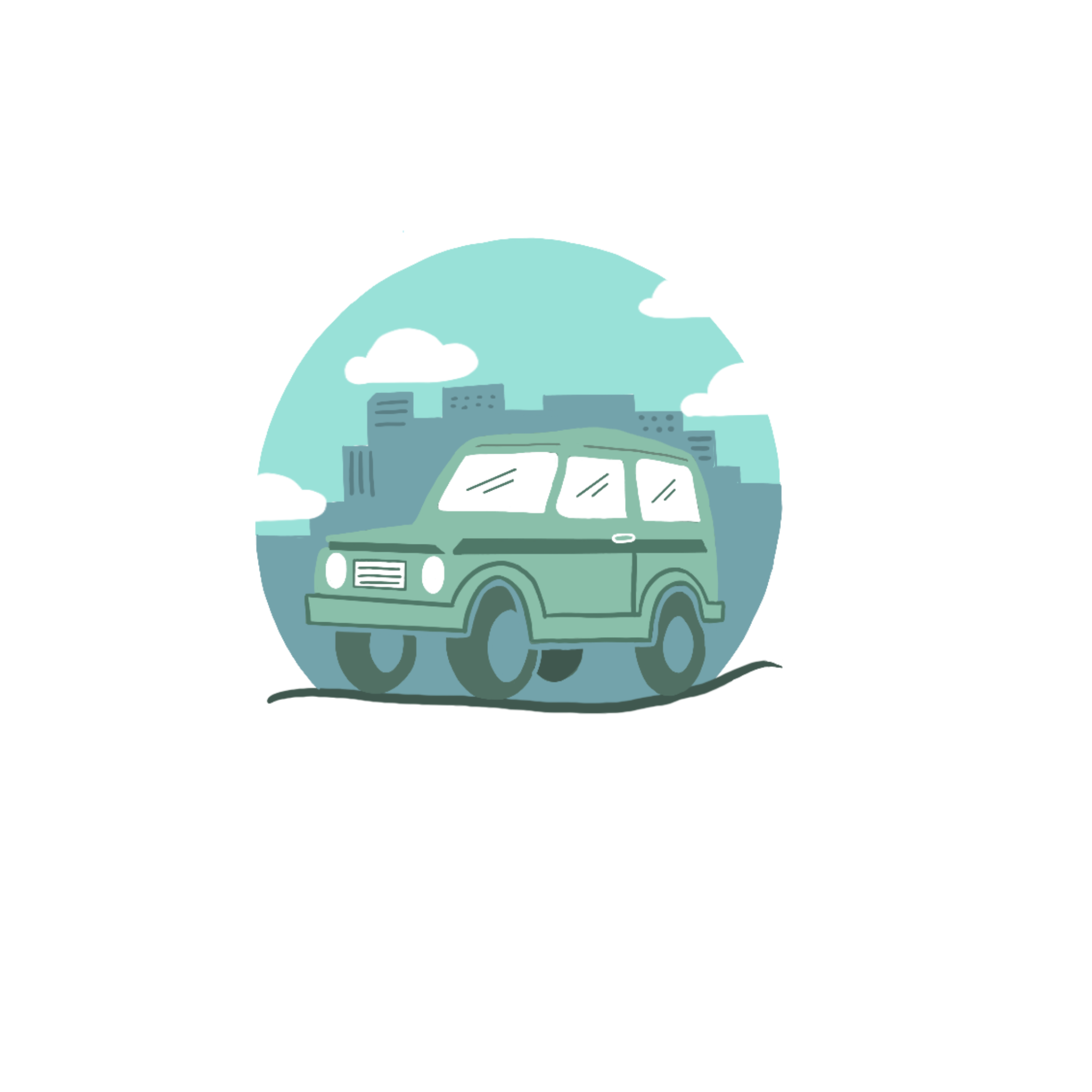Increased Local Spending
From errands to date nights, people are getting to more areas of their cities, spending more at local businesses, and staying out longer with a safe ride home.
In 2018 alone, spending in local economies increased by $3 billion due to the availability of Lyft.
50 US States + Toronto
Together with our drivers and riders, Lyft is making a positive mark on cities and communities. We currently operate in all 50 US states, as well as Ontario, Canada. Lyft is more than just a ride from point A to point B. We aim to be an active partner in every community we serve and make a positive impact.
34%
of riders spend more at local businesses as a result of using Lyft.
47%
of riders explore more areas of their city as a result of using Lyft
37%
of riders are more likely to attend community events as a result of Lyft.
Improved City Health
More people live in cities than ever before, and rapid urbanization is placing increased stress on our transportation infrastructure - one that's built for cars that are used 4% of the time and parked the other 96%.
Safer Roads
In the United States, drunk driving causes 28 fatalities every day.
88%
avoid driving under the influence because of Lyft.
53%
use Lyft to transport friends or family who need assistance after drinking.
Environment
Lyft has partnered with public transportation agencies across the US, set a goal to achieve 50% Shared rides by the end of 2020, and launched a bikes and scooters program.
Taken together, these multimodal options are reducing the number of cars on the road and harmful emissions in the air.
Lyft is one of the Top 10 voluntary purchasers of carbon offsets on the planet, and the only fully carbon-neutral rideshare company.
100%
committed to renewable energy.
50%
of all Lyft trips should be shared rides by the end of 2020.
Passengers
Ridesharing has fundamentally changed the way people get around. In fact, hundreds of thousands of riders got rid of their cars because of ridesharing. At Lyft, we're committed to providing rides for those who need them the most. We have improved transportation access for a wide range of people with different needs, including the low-vision community - people who are hard of hearing, or with mobility challenges.
Lyft is committed to continuing to reduce transportation barriers and improve access for all.
178 Million
Passengers saved 178 million hours compared to other transportation modes. The combined value of that time savings and travel costs saving as a result of Lyft is 6 billion dollars.
$50.4K
Median Household income of Lyft riders.
2017 US National Median Household Income was $57.7K
41%
of riders identify with a minority group.
Compare to 39% of the US population in 2017.
Rides to Care
3.6 million Americans miss or delay medical appointments because they don't have reliable transportation.
Lyft is working with hundreds of health organizations and medical facilities to eventually make that number zero.
$2.7 billion
was spent annually by Medicare and Medicaid getting people to medical appointments
Lyft is reducing the cost by 32%
28%
of healthcare riders state that without Lyft they would be less likely to make it to their appointments regularly.
Drivers
Lyft drivers are florists, firefighters, artists, students, parents, and everything in between. The majority of drivers are part-time and drive to supplement their earnings.
In 2018 alone, spending in local economies increased by $3 billion due to the availability of Lyft.
$10 billion
in driver earnings since inception.
91%
drive fewer than 20 hours per week.
56%
identify with a minority group.
96%
say a flexible schedule is very or extremely important.
We Go the Extra Mile for Safety
"Safety is our top priority and it is our goal to make every ride safe, comfortable, and reliable. Since the beginning, we have worked hard to design policies and features that protect our community. People say they use Lyft because they feel safe with our drivers, which is a product of this commitment."
We designed safety into every part of Lyft, from our $1,000,000 liability insurance to our dedicated Trust & Safety team to our 24/7 support, providing everyone in the car ultimate peace of mind.
Our Life's Work
A Letter from our co-founders
It’s time to redesign our cities around people, not cars.
Over the last 50 years, urban development has centered around the automobile, but imagine for a minute, what our world could look like if we found a way to take most of these cars off the road. It would be a world with less traffic and less pollution. A world where we need less parking — where streets can be narrowed and sidewalks widened. It’s a world where pedestrians, bikers, and children can navigate a city just as quickly and safely as an automobile. That’s a world built around people, not cars.
Every day, millions of people connect in Lyft rides, helping demonstrate that people from all backgrounds, neighborhoods and walks of life can come together — even when just for a short trip. This happens when a rider who had a tough day is comforted by their driver’s kind words. It happens when a driver and rider with opposing political views meet on common ground. And it happens when someone gets a safe ride home, a ride to the doctor or a ride to a job interview.
Focusing on purpose and people isn’t just the right thing to do, it provides a lasting competitive advantage.
Life is Better When You Share the Ride
For us, this work is personal. Growing up in Los Angeles traffic, Logan was inspired to find a better way to get around. As a student at the University of California, Santa Barbara, Logan launched the university’s first car-sharing program and was the youngest member to serve on the board of the Santa Barbara Metropolitan Transit District.
At the same time, John was studying at Cornell’s School of Hotel Administration, looking for ways to apply the principles of hospitality outside of hotels and restaurants. He took a city planning course, Green Cities, which sparked his interest in infusing hospitality with transportation to improve people’s quality of life.
We came together in 2007 to launch Zimride, a carpool matching service for universities and companies. In 2012, we launched Lyft and pioneered the idea of on-demand peer-to-peer ridesharing. In those early days, we were told we were crazy to think people would ride in each other’s personal vehicles. One billion rides later, we’re able to look back on an industry that has been defined by the products Lyft pioneered—and we’re able to look forward with excitement to the next generation of transportation services that will be led and created by our team.
The World’s Best Transportation
Today’s transportation status quo is unacceptable. Americans spend over $1 trillion every year owning and operating their cars, making it the second highest household expense (more money than Americans spend on food).28 Yet, each car is only used five percent of the time.29 On top of all that, every year there are 37,000 traffic-related deaths,30 and an additional 58,000 deaths caused by air pollution coming from U.S. road transportation.31 People and our cities are trapped in an unhealthy and inefficient car ownership ecosystem, and it’s time for a solution.
The good news is that recent innovation has helped redefine entire industries around a simple reality: you no longer need to own a product to enjoy its benefits. We’ve seen this play out in the entertainment industry with the introduction of streaming (Netflix, Apple, Spotify) and in computing with the shift to the Cloud (AWS, Google, Salesforce), but never before, and possibly never again, will an industry this large flip from an ownership model to a service model.
A full shift to Transportation-as-a-Service that offers more safe, affordable, reliable and enjoyable experiences across ridesharing, bike and scooter sharing and transit is finally possible. And, we’re beginning to see the early signs of this transition. Based on internal data, we estimate over 300,000 Lyft riders have given up their personal cars because of Lyft, and in 2018, 46% of our riders said they used their cars less because of Lyft.32 By providing riders with the best way to enjoy all modes of transportation in one place, Lyft will deliver the one thing people really want: the true freedom to ride.
The Y in Lyft
The why in what Lyft is doing is most important to us, as well as the cities and communities we serve, and it will always be our company’s North Star.
Lyft’s mission is to: improve people’s lives with the world’s best transportation.
We work to improve people’s lives in three key ways:
1.Socially: by providing a tangible means to bring millions of people and their communities together.
2.Economically: by unlocking affordable transportation access and flexible earnings to improve individuals’ economic mobility.
3.Environmentally: by redesigning the way consumers access transportation, Lyft will play a large role in driving carbon out of the transportation ecosystem.
We’ve been able to drive industry-leading growth against many odds, fueled by a company culture that attracts and retains top talent who is passionate about our shared purpose. In today’s world, operating with a genuine mission is essential to establishing an enduring brand and successful business.
The Road Ahead
Over the last 10 years, we’ve made early progress towards our vision, and today Lyft is a thriving business addressing one of the largest market opportunities of our lifetime. In 2018, we served over 30 million riders and nearly 2 million drivers, achieving $8.1 billion in Bookings and $2.2 billion in revenue.
As Lyft’s business impact expands, so too does its social impact. Our driver community has earned more than $10 billion since inception. In 2018, Lyft riders increased their local spending by more than $2.5 billion due to more accessible transportation.33 And we made all Lyft rides carbon neutral by purchasing offsets for over one million tons of carbon emissions in 2018.
We’re proud of the momentum and even more excited by what lies ahead. Just 1% of miles traveled in the United States happen on rideshare networks.34 The road ahead represents a massive opportunity to serve our communities and drive value for our stockholders.
We take this responsibility to serve our communities and stockholders seriously, and we look forward to proving that with actions and results. If we told you we were building the world’s best canal, railroad or highway infrastructure, you’d understand that this would take time. In that same light, the opportunity ahead requires continued long-term thinking, focus and execution. In order to best deliver long-term value, we will drive the business forward with three key principles:
1.We first serve drivers and riders.
2.We prioritize the long-term health of the business, over day-to-day reactions of the markets.
3.We thoughtfully balance investments in growth and profitability considerations, while deliberately leaning more towards growth (especially in these early days).
Lyft has the opportunity to deliver one of the most significant shifts to society since the advent of the car. We do not take that lightly, and we intend to lead this shift with integrity, humanity and strong execution.
Thank you to our community of drivers, riders and team members for making this possible.
Onward,
Logan Green, Co-Founder John Zimmer, Co-Founder
Thank You for a Great Year
"Next time you walk outside, pay really close attention to the space around you. Look at how much land is devoted to cars- and nothing else. How much space parked cars take up lining both sides of the street, and how much of our cities go unused covered by parking lots. It becomes obvious, we've built our communities entirely around cars. And for the most part, we've built them for cars that aren't even moving"
Cars have taken our cities, let's take them back!



